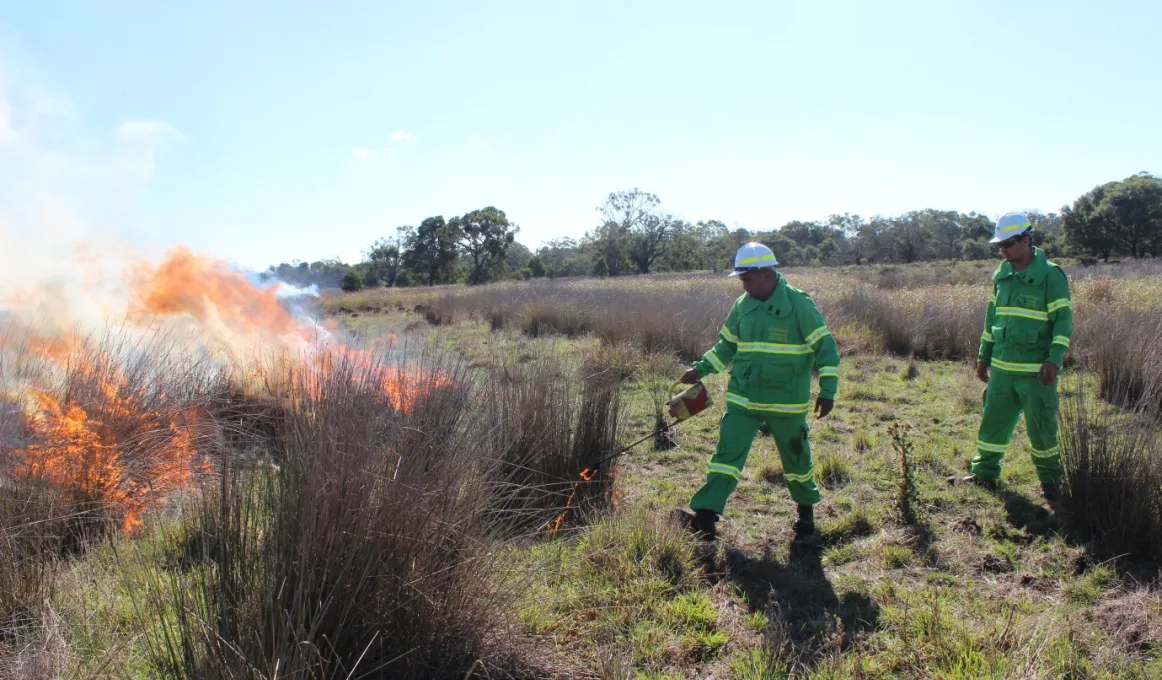Ranger jobs giving local people the skills they need for future careers

The national heritage listed Budj Bim volcanic landscape in South-West Victoria is providing the training ground for members of the local Indigenous community, the Gunditjmara, to develop skills and experiences far beyond land management - setting them up for long term contributions to community and economic participation both within and outside the ranger workforce.
The national heritage listed Budj Bim volcanic landscape in South-West Victoria is providing the training ground for members of the local Indigenous community, the Gunditjmara, to develop skills and experiences far beyond land management - setting them up for long term contributions to community and economic participation both within and outside the ranger workforce.
The Winda Mara Aboriginal Corporation, located in Heywood near Portland, Victoria, provides employment, training, land management, heritage protection and community engagement through its Budj Bim Environment and Heritage Rangers Working on Country, established in 2008 and Tyrendarra Indigenous Protected Area (IPA), declared in 2003.
The workplace for 13 rangers is the volcanic plains area of South-West Victoria which contains some of the world’s largest and oldest aquaculture systems. Here, rangers work on Winda Mara’s own IPA and on the Budj Bim Indigenous Protected Area owned by neighbouring Gunditj Mirring Traditional Owner Aboriginal Corporation.
Ranger jobs are highly sought after in a region where employment opportunities are limited. The opportunities provided by Working on Country and Indigenous Protected Area, in particular the intensive training and skills development that every ranger undertakes, increases confidence and skills and prepares rangers for a more proactive role within their own communities and in the wider region.
For example, Budj Bim rangers, all trained in public speaking, cultural knowledge and land management, took 1200 visitors to their Indigenous Protected Areas in 2014. They confidently spoke about culture and country, taught school children to identify species and supervised work experience groups on their Indigenous Protected Areas. The strong and regular presence of rangers in schools, where they present on their work and culture, strengthens inter-cultural understanding and promotes the ranger profession among students.
“Rangers are proud of passing on the knowledge of their culture and believe they are contributing to understanding and reconciliation in the local community,” explains project manager Matthew Butt.
The Indigenous Protected Area and Working on Country projects have proven to be a successful local training ground, moving Aboriginal people on from ranger work into other employment further afield. Project manager Matthew Butt estimates that over the past 11 years, 30 people have come through the Indigenous Protected Area /Working on Country project and the majority have gone on to other jobs or further study with Parks Victoria, in other apprenticeships, in agriculture and, in one case, on to university to study land management and conservation.
“We are able to provide an entry point into the workforce for those who would not otherwise have such opportunity and then we give them the skills to move on,” Matthew said.
In the next stage of capacity building of the ranger workforce, rangers are, for the first time, leading the development of the new Indigenous Protected Area management plan, a process previously outsourced to consultants.
As culturally significant places, Matthew said the Indigenous Protected Areas provide a perfect training ground for Working on Country rangers. Working on their own land and learning about culture on-the-job adds meaning and relevance to work which motivates and sustains rangers.
The broader opportunities to contribute to Indigenous Protected Area planning and decisions-making help rangers to develop skills well beyond those of land management, providing individuals with better opportunities for future work while building community capacity for a broad range of other projects.
“Recently Rangers have been the community driving force behind the review of the Tyrendarra Indigenous Protected Area Plan of Management. This has helped Rangers gain confidence in their professional ability to undertake planning and decision making in their present and future careers,” Matthew said.
Find out more
The Australian Government supports Indigenous communities to manage Indigenous Protected Areas for land conservation and to create jobs for people in remote locations where there are limited employment opportunities.
More information can be found in Reporting back...2013-14: Working on Country and Indigenous Protected Areas Programmes.